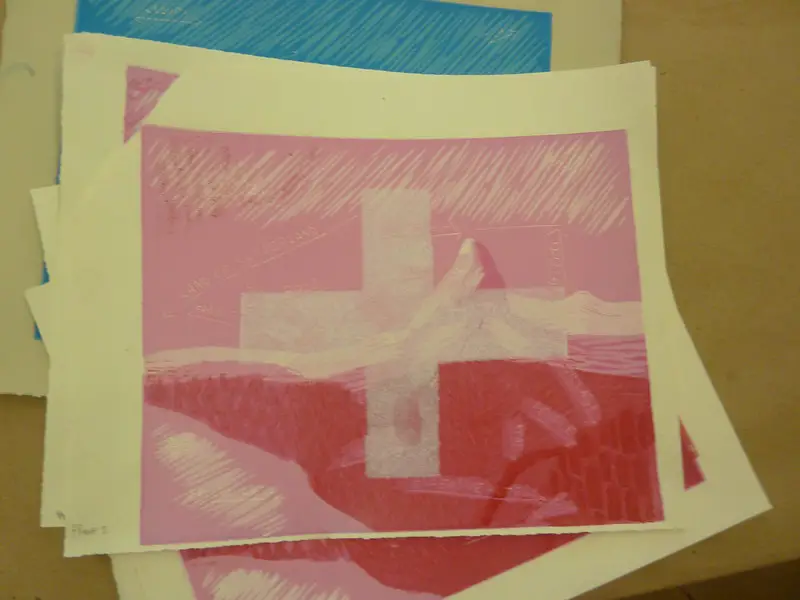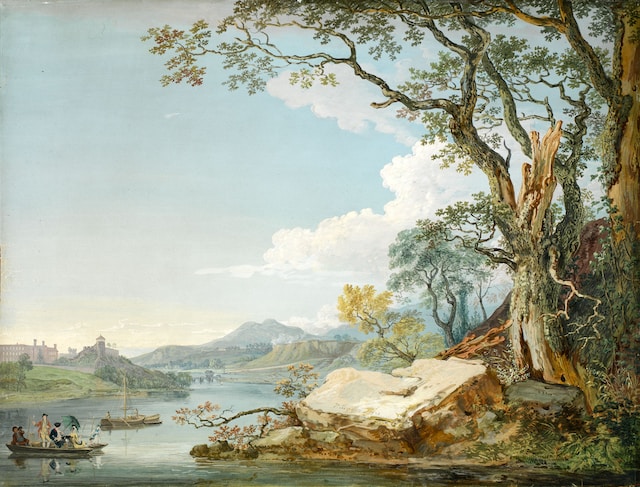Printmaking is a technique where an image is created on a matrix, such as a metal plate or a woodblock, and then transferred onto paper or another surface. Painting, on the other hand, involves applying pigments to a surface, such as canvas or paper, to create an image.
What is printmaking?
(Photo By Jirka Matousek on Flickr)

Printmaking is a form of art that involves creating an image by transferring ink from a matrix, such as woodblock or metal plate, onto paper or other materials. It dates back to ancient China and has evolved over time with the use of modern technologies. Unlike painting, which produces one unique work, printmaking allows artists to create multiple copies of the same image known as an edition.
The process starts by carving or etching the design into the matrix using various tools and techniques such as acid baths or engraving needles. Once completed, ink is applied onto the raised surfaces of the matrix before being transferred onto paper through pressure.
Printmaking offers endless possibilities for artists to experiment with different textures, colors and styles while producing high-quality prints that can be sold at affordable prices compared to original paintings. With its unique charm and versatility, printmaking continues to capture hearts worldwide!
What is painting?
(Photo by Birmingham Museums Trust on Unsplash )

Painting is a form of visual art that involves the use of pigments, typically applied to a surface such as canvas, paper or wood. It is an ancient art form with roots dating back thousands of years and has undergone significant evolution throughout history.
Painting can be executed in various styles such as realism, abstract, impressionism and expressionism. The artist’s technique can range from using brushes, sponges or even fingers to apply paint onto the surface. Painting allows artists to express their creativity by playing with color schemes, different textures and techniques.
One of the advantages of painting is its ability to evoke emotions through an image in ways that other forms of art cannot achieve. It also provides a sense of permanence that captures moments in time through colors and shapes.
Paintings have been used throughout history for storytelling purposes or simply as decorative pieces within homes or public spaces. Today they are just as relevant and continue to capture our imagination while serving multiple purposes including social commentary and self-expression.
Painting remains one of the most popular forms of art due to its versatility; it has evolved over time while remaining timeless at its core.
Printmaking Vs. Painting – Key differences
Printmaking and painting are two different art forms that have their own unique characteristics. Printmaking involves creating multiple copies of an image or design by using a printing plate or other type of surface, while painting involves applying paint to a canvas or other material to create a single piece of artwork.
One key difference between printmaking and painting is the ability to produce multiple copies. With printmaking, you can create several identical prints from one original image, whereas with painting, each piece is unique and cannot be reproduced in exact detail.
Another major difference between these two art forms is the process itself. In printmaking, the artist must carve or etch the design onto a plate before it can be printed onto paper or other materials. Painting typically involves layering colors on top of each other until the desired effect is achieved.
The type of materials used also differs between printmaking and painting. Printmakers often use special types of ink that are designed for use with printing plates, while painters usually use traditional oil paints, acrylics or watercolors.
While both printmaking and painting are valuable artistic techniques that allow artists to express themselves creatively in different ways; they differ significantly in terms of their processes and final products.
What are the 4 main types of printmaking?
Printmaking is a versatile art form that has been practiced for centuries. The medium encompasses a range of techniques, each with its own unique characteristics and aesthetic qualities. In this section, we will explore the four main types of printmaking.
Relief Printing: This type of printmaking involves carving away areas from a block or plate to leave raised surfaces that can be inked and printed onto paper. Woodcutting and linocutting are two popular forms of relief printing.
Intaglio Printing: Unlike relief printing, intaglio involves etching or engraving into the surface of the plate to create recessed areas that hold ink which is then transferred onto paper through pressure during printing. Etching, dry point and aquatint are examples of intaglio prints.
Lithography: Lithography relies on the principle that oil-based inks do not mix with water-based substances like stone or metal plates coated with photosensitive chemicals. A drawing is made directly onto such plates using greasy materials such as crayons or tusche before being washed with an acidic solution to fix it in place.
Screen printing: Also known as serigraphy, screen printing is based on stenciling techniques where ink passes through a mesh screen onto paper below leaving behind only those portions designated by stencil cuts after removing excess ink from non-printing spaces using squeegees.
Each technique presents its own challenges and opportunities for creative expression within the medium but all require patience, attention to detail and skillful craftsmanship in order to produce successful results whether working independently at home or collaborating professionally in studios around the world!
How is printmaking different than drawing?
Printmaking and drawing are two art forms that heavily rely on the use of lines, shapes, and textures. However, their execution and end results differ vastly.
In printmaking, an image is created by transferring ink or paint from a matrix (such as woodblock or metal plate) onto paper using pressure. This process usually requires multiple steps to create each individual print. On the other hand, drawing involves making marks on a surface with various tools such as pencils or pastels.
Printmaking allows for the creation of multiples of one artwork while drawing typically results in only one original piece. Additionally, artists can experiment with different materials in printmaking to achieve unique effects that may not be possible with traditional drawing techniques.
The level of detail achievable also varies between these two mediums; printmakers can produce incredibly intricate pieces due to the precision required during each step of the printing process. Meanwhile, drawings often showcase more organic qualities due to variations in line weight and texture.
Both printmaking and drawing offer distinct advantages for artists looking to express themselves through visual means.
The advantages of printmaking
Printmaking is a versatile and unique art form that offers many advantages over traditional painting techniques. One of the biggest advantages of printmaking is the ability to create multiple copies of a single image. This makes it an excellent choice for artists who want to produce large quantities of their work or experiment with different variations on a particular theme.
Another advantage of printmaking is the opportunity to explore new textures and effects within your artwork. With techniques such as etching, engraving, lithography and screen printing, you can manipulate the ink in interesting ways that would be difficult or impossible with paint alone.
Printmaking also allows for greater precision and control in your artwork. Unlike painting where each brush stroke may vary slightly from the last, printmakers have more control over how each piece turns out because they are working with pre-made plates or screens.
Printmaking offers a level of reproducibility that simply isn’t possible with other forms of art-making. By producing multiple prints from one plate or screen, artists can share their work with a larger audience without sacrificing quality or artistic integrity.
There are many reasons why an artist might choose to explore printmaking as part of their creative practice – whether it’s for its versatility, precision or unique aesthetic qualities.
The advantages of painting
Painting is a form of art that allows artists to express their emotions, thoughts and ideas through colors, shapes and textures. One of the main advantages of painting is the level of creativity it offers. Unlike printmaking or drawing, painting gives artists more room for experimentation as they can mix different colors together to create unique hues.
Another advantage of painting is its versatility. Paint can be applied on various surfaces such as canvas, paper, wood or even walls. This means that an artist can choose any surface that suits their artistic vision and experiment with different techniques and styles.
Painting also offers a therapeutic effect on both the artist and the viewer. For artists, creating art helps them relieve stress and anxiety while allowing them to express themselves freely without judgment. For viewers, looking at paintings produces feelings of relaxation and introspection.
Another benefit of painting is its longevity. When properly taken care of, paintings can last for centuries serving as a testament to an artist’s legacy long after they are gone.
Painting provides a sense of accomplishment when completed. It takes time and dedication to finish a piece but once done an artist feels proud knowing they have created something beautiful from scratch.
In conclusion Painting has many advantages over other forms of art making it one-of-a-kind in terms of what it has to offer both the artist who creates it as well as those who observe it.
Featured Image By – russn_fckr on Unsplash








